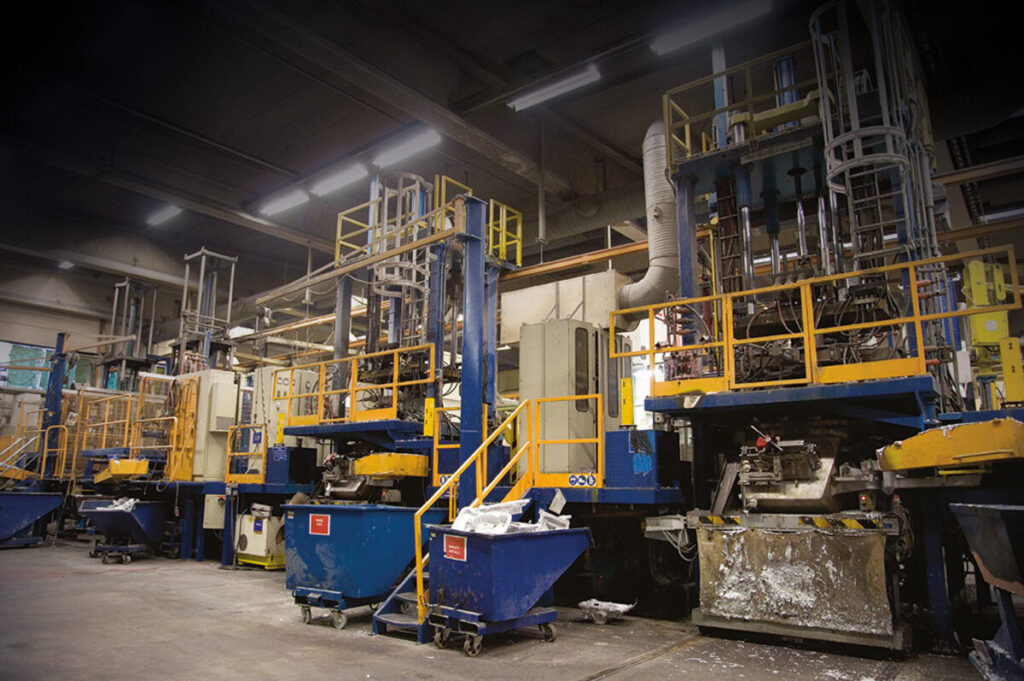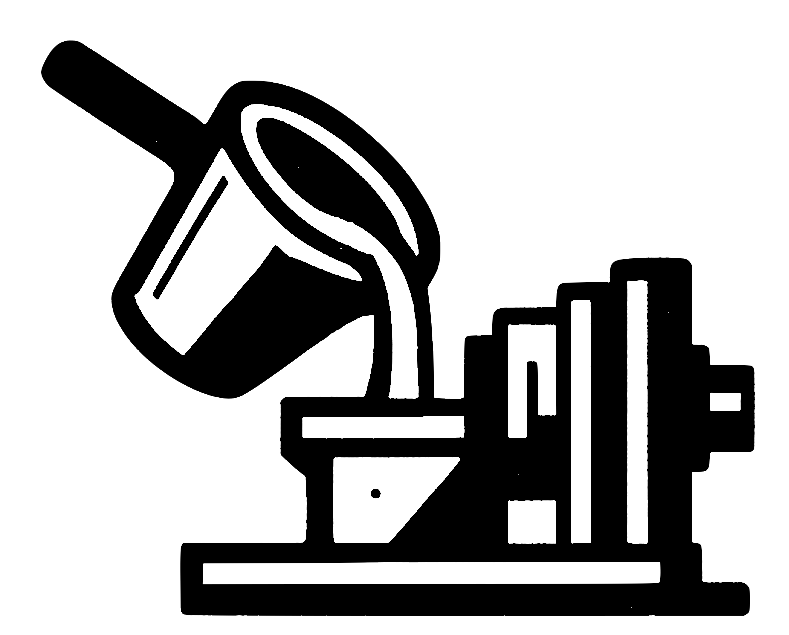
Pressure Die Casting
What is Pressure Die Casting?
Pressure die casting is a precision manufacturing process in which molten metal is injected into a high-strength steel mold (called a die) under substantial pressure. This rapid and controlled injection process ensures that the molten metal fills the mold cavity completely before solidifying, resulting in components with high dimensional accuracy, excellent surface finishes, and exceptional repeatability.
This method is particularly effective for producing complex, net-shape or near-net-shape components, where minimal or no machining is needed afterward. Pressure die casting supports:
- Tight tolerances (ideal for critical mechanical or aesthetic features)
- Smooth surface finishes (minimizing or eliminating finishing steps)
- Intricate geometries (thanks to high-pressure flow and precise die design)
- High production speeds and volume scalability
It is widely used in industries where strength, consistency, and production efficiency are essential—such as automotive, aerospace, electronics, and industrial equipment. The resulting parts are often lightweight yet strong, and capable of integrating complex design elements that are difficult or expensive to achieve with other manufacturing methods.
Our Capabilities
At our cutting-edge die casting facility, we are equipped to support a wide range of customer needs—whether you’re producing prototype runs or scaling up to full production volumes.
We specialize in both:
- Cold chamber die casting: best suited for metals with high melting points such as aluminum and magnesium.
- Hot chamber die casting: ideal for lower melting point metals like zinc and certain magnesium alloys.
Materials We Work With:
- Aluminium: Lightweight, corrosion-resistant, and strong—perfect for automotive, aerospace, and consumer electronics applications.
- Zinc: Offers excellent dimensional stability and is ideal for intricate detailing.
- Magnesium: The lightest structural metal, known for its strength-to-weight ratio and electromagnetic shielding properties.
We maintain a rigorous in-house quality control system, with advanced inspection tools and testing protocols at every stage of production. From die design and process optimization to final inspection, we ensure each component meets the highest industry standards and your exact specifications.
Whether you’re looking for cost-effective, high-volume production or precision engineering for demanding applications, our team is here to deliver excellence at every step.
Machinery Overview
We operate a versatile fleet of pressure die casting machines, offering a wide range of clamping forces and automation levels.
- Total Machines: [Insert Number Here]
- Machine Tonnage Range: [Insert Range, e.g., 80–1000 tons]
- Types of Machines:
- [Insert Machine Type A] – [Insert Quantity] units
- [Insert Machine Type B] – [Insert Quantity] units
- [Insert Special Equipment] (e.g. robotic handling, trim presses)
Our equipment enables us to run both small prototype series and large production batches with efficiency and repeatability.

Why Choose Vormetal?
At Vormetal, we combine technical expertise with cutting-edge equipment to deliver high-performance die casting solutions that meet the evolving needs of modern manufacturers. Whether you’re launching a new product or scaling an existing one, we bring a unique blend of precision, speed, and support to every stage of your project.
Consistent Quality at Scale
Our robust process controls and rigorous inspection protocols ensure repeatable accuracy across thousands or even millions of parts. You can rely on Vormetal for tight tolerances and defect-free surfaces, batch after batch.
Custom Tooling & In-House Engineering
From concept to production, our experienced engineers work directly with you to optimize your part design, reduce production risks, and accelerate time-to-market. We offer custom die tooling, mold flow simulation, and DFM (Design for Manufacturability) support.
Vertically Integrated = Short Lead Times
By keeping all key processes under one roof—including tooling, casting, machining, and finishing—we cut down on handoffs and delays. This translates to shorter lead times, better communication, and more responsive production cycles.
Sustainable Manufacturing Practices
Our production lines are designed for efficiency and environmental responsibility. We prioritize recycling of scrap material, optimize energy usage, and strive to reduce our carbon footprint—without compromising quality or cost.
Ready to Discuss Your Project?
No matter the complexity or scale of your component, Vormetal’s pressure die casting services are built to deliver the precision, reliability, and scalability you need.
Contact our engineering team today to learn more about our capabilities and get a tailored quote based on your design and production requirements.
What are the typical applications of pressure die-cast parts?
Pressure die casting is used across many industries, including:
- Automotive: transmission housings, engine covers, brackets.
- Aerospace: structural components, housings.
- Electronics: enclosures, heat sinks.
- Consumer goods: appliance parts, power tools.
The process is favored where tight tolerances and high strength-to-weight ratios are important.
How long does it take to get a die-cast part made?
The lead time for die casting includes tooling (2–6 weeks) and part production. Once the tooling is ready, parts can be produced very quickly—often in seconds per part, making it one of the fastest casting methods.
What is the difference between pressure casting and sand casting?
The difference between pressure casting and sand casting is that pressure casting uses a steel mould (die) to shape the metal under high pressure, ensuring high dimensional accuracy and smoother surface finishes. In contrast, sand casting uses a sand mould, which is more flexible for complex geometries but typically results in a rougher surface and lower precision.
Is it possible to produce large quantities of aluminum casting products?
Yes, pressure die casting is ideal for high-volume production. Once the die is made, it can be reused thousands of times, making it cost-efficient for mass production of consistent, high-quality components. This is one of its main advantages over other casting processes.
What materials can be used in pressure die casting?
Pressure die casting is commonly used with non-ferrous metals, including:
Magnesium
Aluminum
Zinc
These materials offer a good balance of strength, light weight, and castability.
